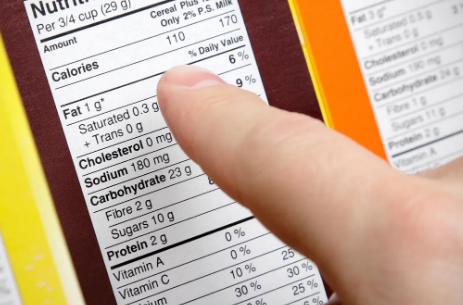Natural Wine Order: How to Read Labels and Understand the Winemaking Process

As wine enthusiasts, we all know that reading labels is an essential part of understanding the wine we are drinking. However, when it comes to natural wine, the label can be a whole different ball game. With its growing popularity, natural wine order is gaining traction amongst wine lovers worldwide. But what exactly is natural wine, and how do we read the labels and understand the winemaking process? In this blog, we will take a deep dive into the world of natural wine and guide you through the process of reading labels and understanding the winemaking process.
Decoding Natural Wine Labels
While many people appreciate the unique taste and authenticity of natural wine, deciphering the labels can be a challenge for beginners. Read on to decode the labels while ordering next time.
# Organic
The label ‘organic’ indicates that the wine was produced using organic methods. This means that the grapes used to make the wine were grown without the use of any synthetic fertilizers, pesticides, or herbicides. Additionally, the wine must also not contain any additives, preservatives, or added sulfites. Organic wines must also be produced in accordance with the regulations of the country in which the wine is produced.
# Sulfites
Label ‘Sulfites’ indicates that the wine contains sulfites. Sulfites are a type of preservative made up of sulfur dioxide (SO2) that are added to wine to protect it from spoilage and oxidation. Sulfites are added to wines in various forms and concentrations depending on the type of wine. They act as an antimicrobial agent, preventing the growth of bacteria or yeast that can cause spoilage. In addition to preserving the wine, sulfites also help to increase the shelf-life of wine by preventing oxidation and discoloration. In the United States, wines containing more than 10 parts per million (ppm) of sulfites must include the “contains sulfites” label on the bottle. This label is required by law and helps consumers identify wines that may cause adverse reactions in those with sulfite allergies.
# Minimal intervention
The term ‘Minimal Intervention’ on a wine bottle indicates that the winemaking process used was very hands-off, or minimal. This means that the winemaker used traditional, natural techniques and avoided any unnecessary additions or processes that could alter the natural flavor of the wine. This includes using only natural yeasts, avoiding additives such as sulfites, and using minimal filtration or clarification processes. These minimal intervention techniques help to create wines that are more complex and authentic, and that retain more of the natural flavors of the grapes.
# Unfiltered
The label ‘Unfiltered’ reflects that the wine has not gone through a process of filtration. Filtration is a process of removing particles, such as yeast, bacteria, and other sediment, from the wine. Unfiltered wines are usually left in their natural state and are usually more cloudy in appearance. These wines are more likely to be more aromatic and often have a fuller flavor. However, because they are not filtered, they can also be more prone to spoilage and oxidation.
# Winemaking Region or Vineyard
Depending on the region, vineyard labels can indicate the specific vineyard, the winery, or the appellation of the grapes used in the wine. These labels are important as they can provide information on the growing conditions, climate, soil, and terroir of the grapes used in the wine, which can influence the flavor and quality of the wine. Some vineyard labels may also indicate the winemaker or of the year the grapes were harvested.
The Winemaking Process of Natural Wines
The winemaking process for natural wines differs from conventional wines in various ways. Here is a breakdown of the winemaking process of natural wines, and how to read labels to understand the process.
Farming Practices
Natural wines are made by farmers using organic and biodynamic farming practices to cultivate their grapes. Organic farming eliminates the use of synthetic pesticides, herbicides, and fertilizers, while biodynamic farming takes a holistic approach to farming by considering the vineyard’s environment, soil, and even lunar cycles.
Harvest
Once the grapes are ready for harvesting, natural winemakers pick them by hand. Handpicking allows winemakers to select only the best grapes and avoid any damaged or overripe fruit. This process also ensures that the grapes are handled gently, reducing the risk of bruising and oxidation.
Fermentation
The fermentation process for natural wines differs from conventional wines. While conventional wines use commercial yeasts to ferment the grapes, natural winemakers rely on the yeasts present on the grapes and in the winery. This process is known as spontaneous fermentation, and it allows the wine to develop unique flavors and aromas.
Additives
Natural winemakers avoid using any additives in their wine. This includes things like sulfur dioxide, which is commonly used as a preservative in conventional wines. Natural winemakers believe that additives can mask the true flavors and aromas of the wine, and can even cause health problems for those who consume it. However, some natural winemakers may use small amounts of sulfur dioxide, but it must be within the limits set by organic regulations.
Labeling
Reading the label of a natural wine can be tricky, as there is no official definition for the term “natural wine.” However, there are some key phrases to look out for. Wines labeled as “organic” or “biodynamic” are often made using natural winemaking practices. Additionally, some winemakers may use phrases like “low-intervention” or “minimalist” to describe their winemaking process, which can be indicative of natural winemaking practices. Ultimately, the best way to know if a wine is natural is to do some research on the winery and their winemaking practices.
Final Words
Though natural wine has become increasingly popular, when it comes to ordering, it can be a bit confusing. Knowing how to read labels and understand the winemaking process can help you make better choices. By understanding the terms and techniques used, you will be able to pick the perfect natural wine for you. With the right knowledge, you can enjoy the unique flavor and complexity of natural wines.





